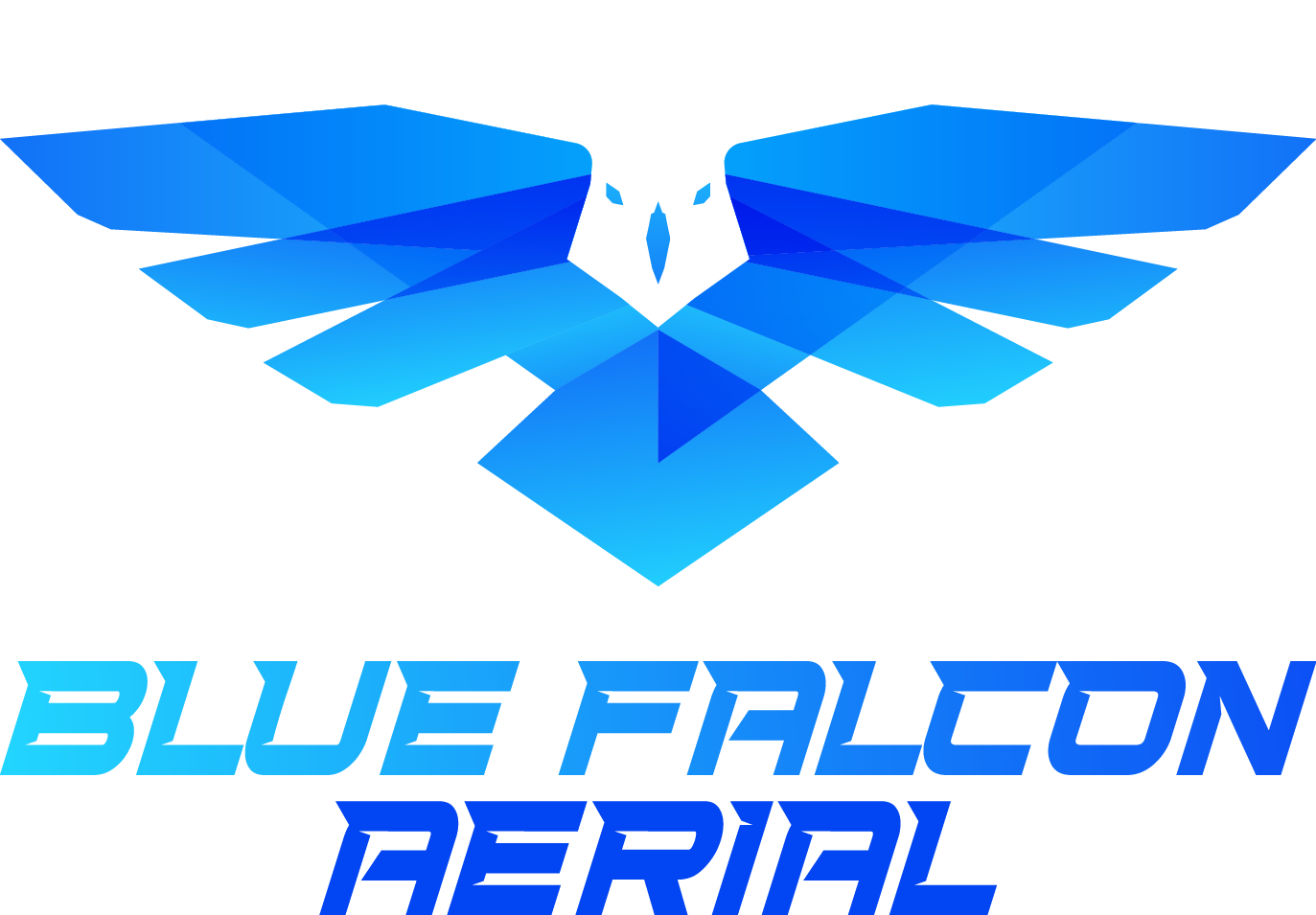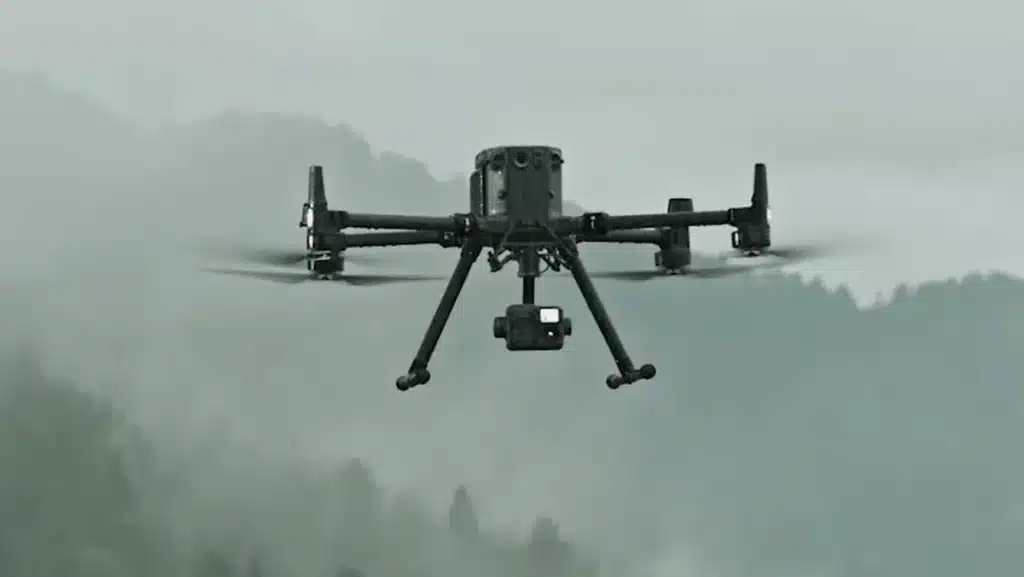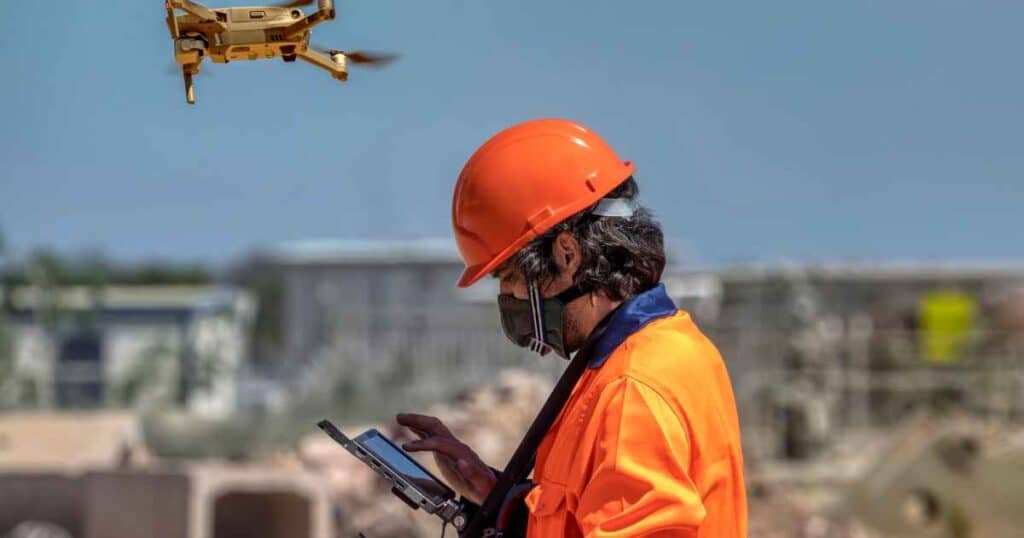The DJI Matrice 350 RTK represents a monumental leap in drone technology, setting a new benchmark for performance, reliability, and versatility. As the latest flagship in aerial innovation, this drone is equipped with groundbreaking features designed to enhance every aspect of aerial operations. From its robust flight capabilities and advanced imaging options to its sophisticated control systems, the Matrice 350 RTK is fully powered to meet the demands of any mission, under any conditions. This article will explore how this next-generation drone platform can revolutionize industries and redefine expectations for what drones can achieve.
Key Takeaways
Advanced Transmission System: The DJI Matrice 350 RTK features the O3 Enterprise Transmission system, which supports triple-channel 1080p HD live feeds and maximizes transmission stability over distances up to 20 kilometers, significantly enhancing operational scope and data reliability.
Enhanced Battery Life: Equipped with a new TB65 dual-battery system, the Matrice 350 RTK allows for extended flight times of up to 55 minutes and supports hot swapping to minimize downtime, optimizing continuous aerial operations.
Robust Payload Options: The drone supports multiple payload configurations including the advanced Zenmuse H20 series, allowing for versatile applications in thermal imaging, high-resolution photogrammetry, and Lidar-based surveying.
Durable and Reliable: With an IP55 rating, the Matrice 350 RTK is capable of operating in adverse weather conditions, ensuring reliable performance in both dusty and wet environments.
Intelligent Operation Features: The drone includes features like automated flight paths, high-precision mapping, and smart oblique capture, which streamline operations and enhance the efficiency and accuracy of data collection.
Wide Industry Applications: The DJI Matrice 350 RTK is highly adaptable for various sectors including public safety, infrastructure inspection, environmental monitoring, and precision agriculture, making it a valuable tool for diverse professional needs.
Integration and Usability: Integrating the Matrice 350 RTK into existing workflows is facilitated by comprehensive training, regulatory compliance, and strategic deployment planning, ensuring seamless adoption and maximized utility in professional settings.
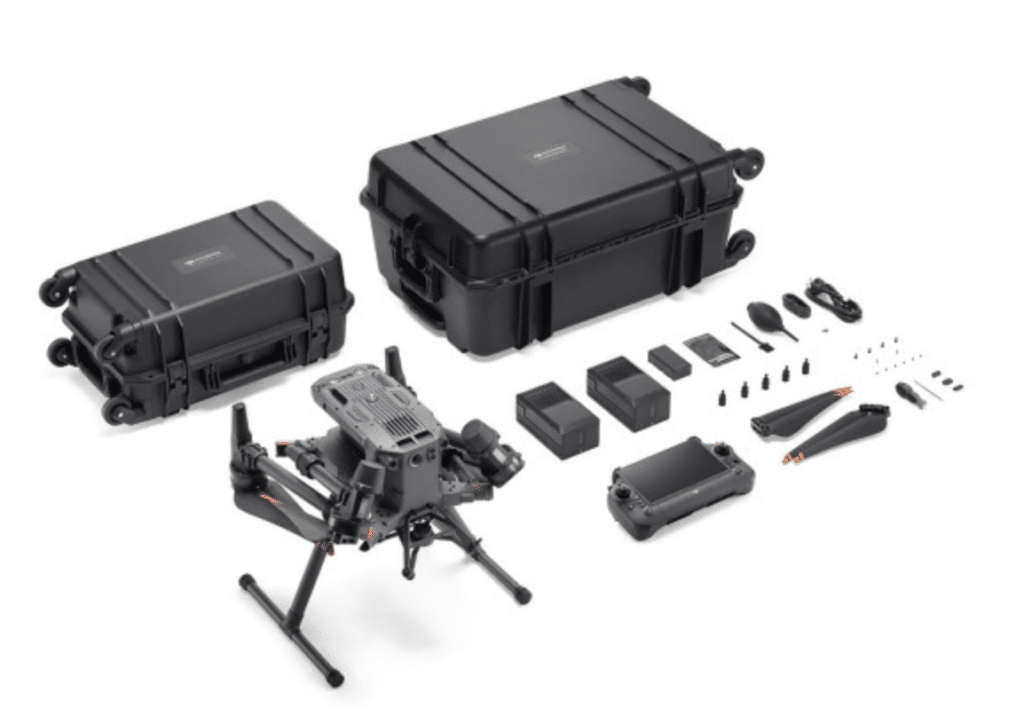
Unpacking the Features
The DJI Matrice 350 RTK is designed with a suite of advanced features that set it apart as a leader in drone technology. This section will delve into the key aspects of the drone’s capabilities, from its robust video transmission system to its enhanced battery life and safety features, all of which contribute to its exceptional performance.
All-New Video Transmission System
The Matrice 350 RTK introduces the DJI O3 Enterprise Transmission system, a significant upgrade that supports triple-channel 1080p HD live feeds and boasts a maximum transmission distance of 20 kilometers. This system is equipped with a four-antenna transceiver on both the aircraft and the remote controller. This configuration not only improves anti-interference capabilities but also optimizes transmission stability, ensuring clear and reliable video feeds even in complex environments.
Enhanced Battery System
Equipped with the new TB65 dual-battery system, the Matrice 350 RTK allows for extended operational periods with a maximum flight time of 55 minutes. The batteries support hot swapping, which minimizes downtime by enabling battery changes without powering down the drone. This feature is crucial for time-sensitive missions, providing continuous flight capabilities. The BS65 Intelligent Battery Station further complements this system by offering a one-stop solution for battery charging, storage, and transport, featuring multiple charging modes and intelligent management capabilities.
Comprehensive Safety Features
Safety is paramount in drone operations, and the Matrice 350 RTK excels in this area with its IP55 rating, indicating strong protection against dust and water. This makes it suitable for flying in various weather conditions, from rain to dusty environments. Additionally, the drone includes six-directional sensing and positioning, which enhances its obstacle avoidance capabilities, providing greater security and stability during flight.
Robust Payload and Expansion Capabilities
The Matrice 350 RTK is designed to be versatile with its payload options. It supports multiple configurations, including single downward, dual downward, and single upward gimbals, along with an E-Port open interface. This flexibility allows the drone to carry up to three payloads simultaneously, with a maximum capacity of 2.7 kg. Whether for public safety applications, detailed inspections, or complex mapping tasks, the drone’s payload options ensure it can be equipped to handle diverse operational needs.
Night-Vision FPV Camera and Multi-Payload Support
An integral part of the Matrice 350 RTK’s design is its night-vision FPV camera, which enhances pilot visibility during low-light conditions, thus expanding the drone’s usability into the night hours. This feature, along with the multi-payload support, underscores the drone’s capability to perform in a variety of scenarios, further solidifying its status as a comprehensive tool for professional drone operators.
Through these innovative features, the DJI Matrice 350 RTK not only meets but exceeds the current standards of what professional drones can offer. This platform is ideally suited for users seeking a high-performance drone that combines advanced functionalities with reliability and flexibility.
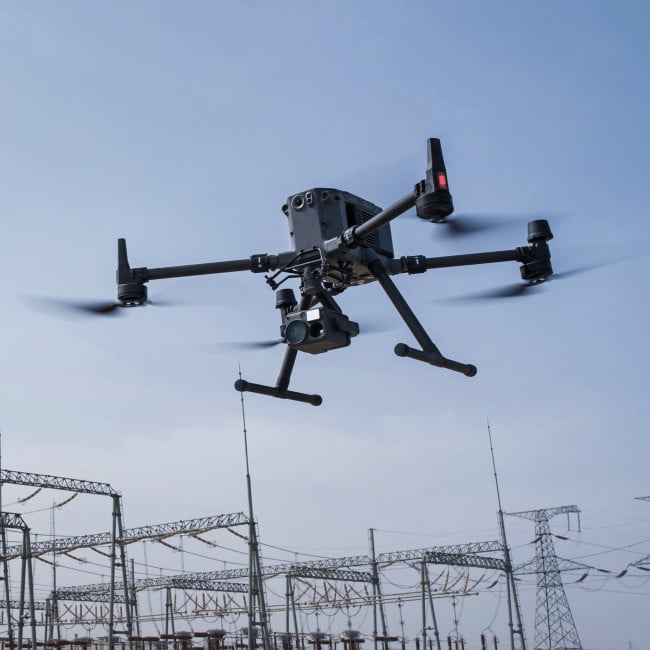
Technological Enhancements
The DJI Matrice 350 RTK boasts several technological advancements that significantly elevate its operational capabilities. These enhancements not only streamline the control experience but also improve the drone’s performance and reliability in challenging environments.
O3 Enterprise Transmission
At the core of the Matrice 350 RTK’s communication capabilities is the DJI O3 Enterprise Transmission system. This cutting-edge technology offers triple-channel 1080p high-definition live video feeds and an impressive maximum transmission range of 20 kilometers. The system includes a sophisticated four-antenna transceiver on both the drone and the remote controller. This setup enhances anti-interference features and ensures stable signal transmission, critical for maintaining control and data integrity during complex missions.
DJI RC Plus: A New Control Experience
The DJI RC Plus remote controller is a formidable component of the Matrice 350 RTK system. It is equipped with a 7-inch high-brightness screen that improves visibility under direct sunlight and supports Dual Operator Mode. This mode allows one operator to control the drone while another manages the camera and payload, facilitating complex operations and teamwork. The controller is also designed to be rugged, with an IP54 rating ensuring it can withstand dust and water, making it reliable in adverse weather conditions. The operating temperature range of -20° to 50° C (-4° to 122° F) enables around-the-clock operations, even in extreme climates.
Smooth and Efficient Control with DJI Pilot 2
DJI Pilot 2, the optimized app for controlling the Matrice 350 RTK, offers an intuitive user interface that clearly presents flight status and mission types. This app enhances operational efficiency by facilitating smooth control over the aircraft and payloads. Customizable buttons and dials on the remote controller can be programmed to fit individual user habits, providing a tailored and flexible flying experience. This level of customization ensures that pilots can adjust controls quickly, responding to changing conditions or operational needs seamlessly.
Enhanced Battery System and Intelligent Management
The new Dual-Battery System (TB65) significantly extends the operational capabilities of the Matrice 350 RTK, supporting up to 55 minutes of flight time. This system not only allows for battery hot swapping but also integrates with the BS65 Intelligent Battery Station, which provides efficient charging, storage, and transportation solutions. Multiple charging modes, such as Storage Mode for long-term battery health and Ready-to-Fly Mode for quick deployment, ensure that the drone is always prepared for missions. Intelligent management features include real-time battery status and health monitoring through the DJI Pilot 2 app, simplifying maintenance and logistical tasks.
These technological enhancements make the DJI Matrice 350 RTK a powerhouse in drone technology, equipped to handle a wide array of applications from precision mapping to intricate inspection tasks. With its advanced transmission capabilities, robust control options, and a highly efficient power system, the Matrice 350 RTK stands out as a top choice for professionals seeking reliability and high performance in their aerial operations.
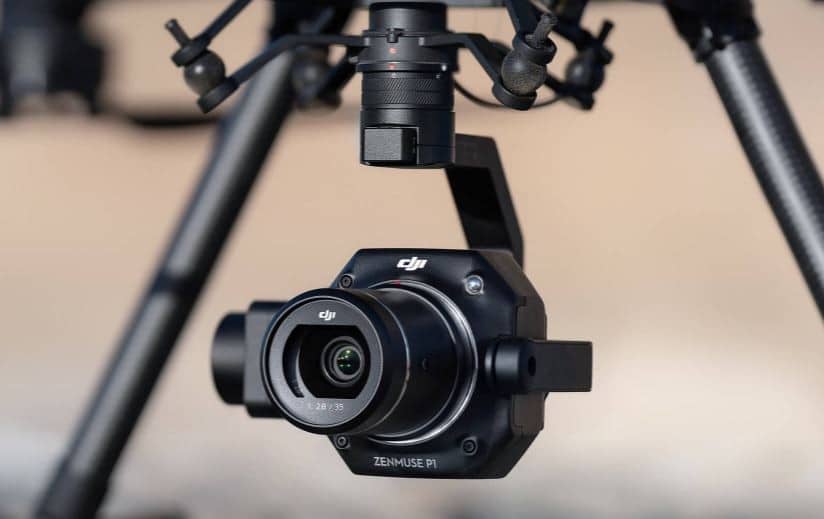
Superior Performance and Reliability
The DJI Matrice 350 RTK is engineered to deliver outstanding performance and reliability, making it an ideal choice for professionals across various industries. This section highlights the drone’s flight capabilities, durability, and the technological integrations that enable it to excel in even the most demanding conditions.
Effortless Powerful Flight Performance
Built to tackle a wide array of challenges, the Matrice 350 RTK features powerful propulsion systems and an enhanced protection rating, which allow it to operate effectively in diverse environments. The drone’s advanced design ensures stable and robust flight performance, crucial for carrying out precise operations such as detailed inspections or complex data collection tasks. Its ability to effortlessly handle these tasks is a testament to its superior engineering and design.
Enhanced Durability with IP55 Rating
The Matrice 350 RTK is designed to withstand harsh conditions, evidenced by its IP55 rating. This rating confirms that the drone is protected against dust ingress that could interfere with normal operation and against low-pressure water jets from any direction, making it suitable for use in rainy or dusty environments. This feature ensures that the drone can continue operating effectively, regardless of the external conditions, providing users with a reliable tool for outdoor and industrial applications.
Advanced Transmission and Control Systems
The Matrice 350 RTK adopts the DJI O3 Enterprise Transmission system, which is particularly noteworthy for its ability to maintain a stable and clear HD video feed over distances up to 20 kilometers. This system’s anti-interference capabilities and transmission stability are critical for missions that require operating the drone at the edge of visual line of sight or beyond.
The drone’s control experience is enhanced by the DJI RC Plus controller, which includes a high-brightness screen for clear visibility in various lighting conditions and supports dual-operator mode. This feature is particularly useful in complex operations where one operator can focus on piloting the drone while another manages the payloads and camera systems.
Smooth and Efficient Battery Performance
The Matrice 350 RTK’s dual-battery system allows for extended flight times of up to 55 minutes, reducing downtime and increasing efficiency on the job site. The batteries are designed for quick swapping, which is invaluable during extended missions requiring continuous operation. The Intelligent Battery Management system ensures that batteries are charged optimally, extending their lifespan and reliability. This system displays detailed battery health and status information, allowing for better management and scheduling of drone operations.
Through these features, the DJI Matrice 350 RTK not only meets the high standards required by professional drone users but also exceeds them, offering unmatched performance and reliability. Its robust build, coupled with advanced technological integrations, makes it a powerhouse capable of executing a wide range of tasks, from aerial inspections to complex mapping projects, with unmatched efficiency and precision.
Payload and Expansion Capabilities
The DJI Matrice 350 RTK distinguishes itself with exceptional payload and expansion capabilities, designed to support a diverse array of professional applications. This flexibility makes it an invaluable tool for industries ranging from public safety and inspection to environmental monitoring and mapping.
Versatile Payload Options
The Matrice 350 RTK can support multiple payload configurations, enhancing its utility across various operational scenarios. It offers the flexibility to mount a single downward gimbal, dual downward gimbals, or a single upward gimbal, along with an E-Port open interface. This adaptability allows the drone to carry up to three payloads simultaneously, with a maximum payload capacity of 2.7 kg. Such capability is ideal for complex missions that require various types of data collection at once, such as combining visual and thermal imaging or multi-sensor ecological surveys.
Zenmuse H20 Series Integration
A standout feature of the Matrice 350 RTK is its compatibility with the Zenmuse H20 series payloads. This series includes:
- Zenmuse H20: A multi-sensor payload featuring a zoom camera, a wide camera, a thermal camera, and a laser rangefinder. This combination delivers exceptional sensing and imaging performance, suitable for detailed inspections and situational awareness.
- Zenmuse H20N: Integrates starlight sensors in its zoom and wide-angle cameras, alongside dual zoom thermal cameras and a laser rangefinder, creating a versatile hybrid payload perfect for operations in low-light conditions.
- Zenmuse P1: Features a full-frame sensor with interchangeable fixed-focus lenses on a 3-axis stabilized gimbal, optimized for photogrammetry missions, enhancing efficiency and accuracy.
- Zenmuse L2: Combines a Livox Lidar module, a high-accuracy IMU, and a mapping camera, ideal for creating real-time 3D data and capturing details of complex structures.
- Zenmuse H20T: Equipped with a 20 MP zoom camera, a 12 MP wide camera, a 1200 m laser rangefinder, and a 640×512 px radiometric thermal camera. This payload is particularly effective for thermal imaging, offering precise temperature measurements ideal for various applications such as energy inspections, search and rescue operations, and environmental monitoring.
Third-Party Payload Compatibility
Enhancing its versatility further, the Matrice 350 RTK is compatible with third-party payloads through the DJI Payload SDK. This feature allows for the integration of customized tools such as gas detectors, loudspeakers, and multispectral sensors. By supporting a wide range of third-party payloads, the Matrice 350 RTK can be tailored to meet specific operational needs, expanding its applications to fields like agriculture for precise crop monitoring, public safety for enhanced communication capabilities, or environmental science for detailed ecological data gathering.
Intelligent Operation Features
The drone’s intelligent operation capabilities are a critical aspect of its payload performance. It supports various mission types such as Waypoint, Mapping, Oblique, and Linear Flight missions, which can be enhanced by Terrain Follow or Smart Oblique settings for efficient data collection. Together with DJI Terra, these features allow the Matrice 350 RTK to quickly obtain high-definition 2D and 3D digital results, facilitating high-precision and high-efficiency mapping operations.
The payload and expansion capabilities of the DJI Matrice 350 RTK are designed to cater to the demanding requirements of modern aerial operations. With its ability to support multiple advanced payloads and adapt to a wide range of mission requirements, the Matrice 350 RTK stands out as a multifunctional platform that can significantly enhance operational efficiency and flexibility in various industries.
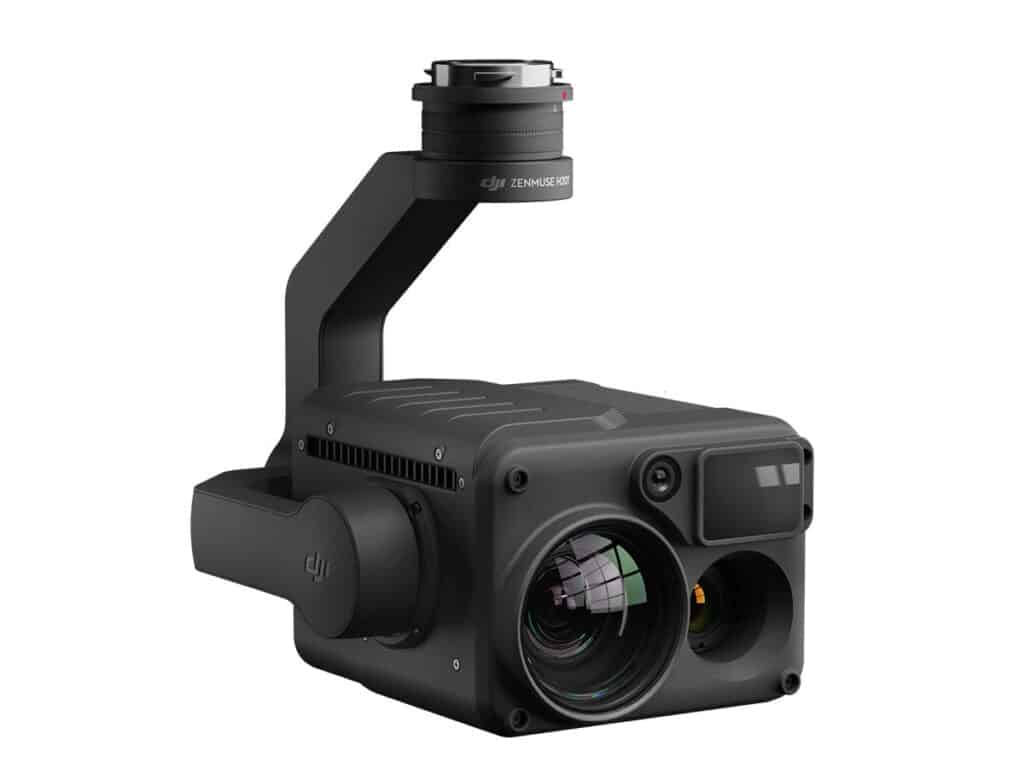
Applications Across Industries
The DJI Matrice 350 RTK’s sophisticated design and robust capabilities make it an essential tool for a broad spectrum of industries. Its ability to carry multiple advanced payloads and perform in challenging environments allows it to provide significant benefits in public safety, infrastructure inspection, environmental monitoring, and precision agriculture, among other fields.
Public Safety and Emergency Response
For public safety and emergency response teams, the Matrice 350 RTK offers critical support during time-sensitive operations. Its thermal imaging capabilities, especially with the Zenmuse H20T payload, allow for the detection of heat signatures from people or fire hotspots, which is invaluable in search and rescue missions and firefighting. The high-resolution cameras and live HD video feed enable operators to assess situations remotely, reducing risk and increasing the efficiency of emergency response efforts.
Infrastructure Inspection and Construction
The Matrice 350 RTK excels in infrastructure inspection and construction monitoring, offering engineers and construction managers a powerful tool for maintaining oversight over large-scale projects. The Zenmuse P1 payload, with its high-resolution photogrammetry capabilities, is ideal for capturing detailed images that can help in the assessment of structural integrity, monitoring of ongoing construction, and verification of completed work. This precision ensures compliance with safety standards and helps in early detection of potential problems.
Environmental Monitoring and Conservation
Environmental scientists and conservationists can leverage the Matrice 350 RTK for detailed environmental monitoring. The drone’s multispectral imaging, provided by payloads like the Zenmuse L1, is perfect for analyzing vegetation health, water bodies, and wildlife habitats. This data is crucial for ecological assessments, environmental impact studies, and conservation efforts, providing insights that help in making informed decisions to protect natural resources.
Agriculture and Land Management
In agriculture, the Matrice 350 RTK transforms crop management through its precision mapping and analysis capabilities. The drone can be equipped with multispectral sensors that analyze crop health, monitor growth, and manage resources more efficiently. This information helps farmers optimize inputs like water and fertilizers, detect plant diseases early, and increase crop yields sustainably. Additionally, its ability to perform terrain-follow missions makes it exceptionally useful in varied topographies.
Integration with Industry-Specific Software
Beyond hardware capabilities, the Matrice 350 RTK’s effectiveness is enhanced through integration with industry-specific software solutions like DJI Terra. This integration facilitates the creation of highly accurate 2D and 3D models for various applications, from city planning and terrain mapping to disaster management and archaeological site recording. The ability to link air, ground, and cloud data also supports complex, collaborative operations that require real-time data sharing and decision-making.
Streamlining Operations with Advanced Features
The advanced features of the Matrice 350 RTK streamline operations across these industries. Automated flight paths, precise positioning with the RTK module, and the ability to carry multiple payloads simultaneously reduce operational times and increase the accuracy of data collected. These capabilities ensure that the Matrice 350 RTK is not just a drone but a comprehensive aerial data collection platform that can significantly impact the efficiency and effectiveness of professional projects across a vast array of sectors.
Integrating the Matrice 350 RTK
Successfully integrating the DJI Matrice 350 RTK into existing workflows represents a strategic advancement for organizations aiming to leverage cutting-edge drone technology. This integration not only enhances the quality and speed of data collection but also streamlines operations across various industries. This section offers a practical guide on how to incorporate this advanced drone into your operations, highlighting its intelligent features and automation capabilities.
Step-by-Step Integration Process
Assessment of Needs: Begin by assessing your specific data collection and operational needs. This will help determine how the Matrice 350 RTK can best be utilized within your existing frameworks.
Training and Certification: Ensure that all drone operators are properly trained and certified to handle the Matrice 350 RTK, focusing on its specific capabilities and safety protocols.
Software Integration: Integrate the drone with industry-specific software platforms, such as DJI Terra for geospatial data analysis or third-party applications supported by the DJI Payload SDK. This integration allows for seamless data management and enhanced analytical capabilities.
Compliance and Regulation: Familiarize yourself with local drone regulations to ensure compliant operation, especially in regulated spaces or near sensitive areas.
Test Flights: Conduct test flights to familiarize operators with the drone’s capabilities and to ensure that all systems are functioning optimally within your specific operational context.
Deployment Strategy: Develop a strategic deployment plan that outlines how and when the drone will be used, optimizing the timing and frequency of flights for maximum data collection efficiency.
Leveraging Intelligent Operation Features
The Matrice 350 RTK is equipped with several intelligent operation features that can be leveraged to enhance efficiency and accuracy:
Automated Flight Paths: Utilize the Matrice 350 RTK’s capability to follow pre-determined waypoints for automated and repeatable flight paths, ideal for monitoring construction sites or conducting regular infrastructure inspections.
High-Precision Mapping: Engage the drone’s RTK module for centimeter-level positioning accuracy, critical for detailed mapping and surveying tasks.
Terrain Following: Use the Terrain Follow mode to conduct flights in varied topographies, ensuring consistent altitude and optimal data collection.
Smart Oblique Capture: Implement the Smart Oblique function to automatically capture detailed images from multiple angles, enhancing the quality of 3D models and reducing the time spent on manual adjustments.
Ensuring Continuous Improvement
Feedback and Adjustments: After initial deployments, gather feedback from all stakeholders and make necessary adjustments to drone operations, optimizing the integration of the Matrice 350 RTK into your workflows.
Ongoing Training and Updates: Keep drone operators up-to-date with the latest firmware and software updates from DJI, and continue training to include new features and operational best practices.
Data Analysis and Utilization: Regularly analyze the data collected by the Matrice 350 RTK to refine operational strategies and improve outcomes across all projects.
Integrating the DJI Matrice 350 RTK into your business operations can transform your data collection capabilities, offering unparalleled precision, efficiency, and flexibility. By following these steps and leveraging the drone’s intelligent features, organizations can achieve higher operational standards and gain a competitive edge in their respective industries.
The DJI Matrice 350 RTK is not just a drone; it’s a comprehensive aerial solution that brings unprecedented efficiency and capability to a wide range of professional applications. With its advanced features like the O3 Enterprise Transmission, IP55 rating, and multi-payload support, it stands out as a top choice for those looking to push the boundaries of what’s possible with aerial technology. If you’re ready to take your operations to the next level, consider how integrating the Matrice 350 RTK can transform your data collection and inspection tasks. Explore our Drone Integration Services to see how we can help incorporate this powerful tool into your workflow. For more information and personalized assistance, please contact us at Blue Falcon Aerial. Unlock the potential of the Matrice 350 RTK and soar above the competition.
